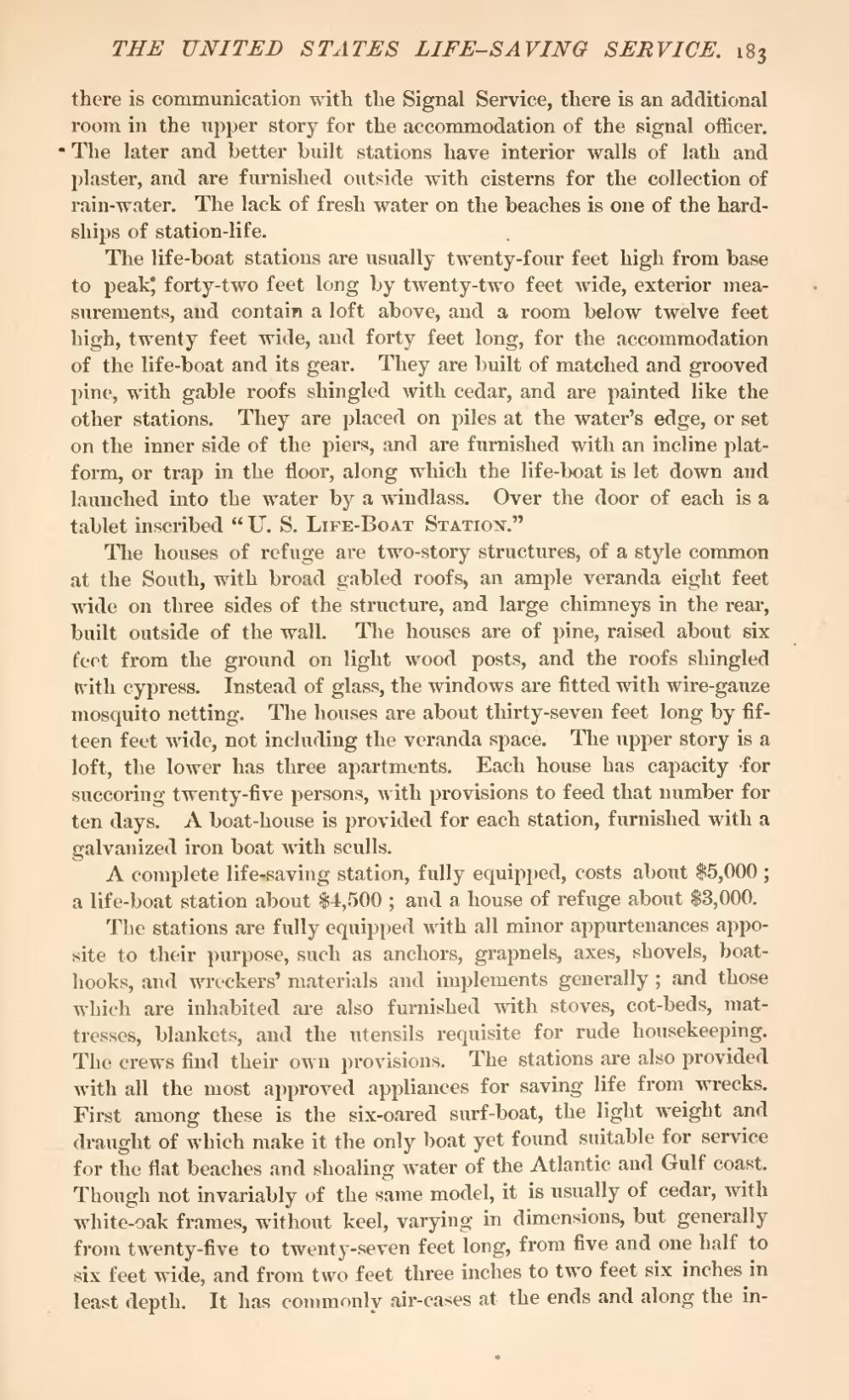there is communication with the Signal Service, there is an additional room in the upper story for the accommodation of the signal officer. The later and better built stations have interior walls of lath and plaster, and are furnished outside with cisterns for the collection of rain-water. The lack of fresh water on the beaches is one of the hardships of station-life.
The life-boat stations are usually twenty-four feet high from base to peak forty-two feet long by twenty-two feet wide, exterior measurements, and contain a loft above, and a room below twelve feet high, twenty feet wide, and forty feet long, for the accommodation of the life-boat and its gear. They are built of matched and grooved pine, with gable roofs shingled with cedar, and are painted like the other stations. They are placed on piles at the water's edge, or set on the inner side of the piers, and are furnished with an incline platform, or trap in the floor, along which the life-boat is let down and launched into the water by a windlass. Over the door of each is a tablet inscribed "U. S. Life-Boat Station."
The houses of refuge are two-story structures, of a style common at the South, with broad gabled roofs, an ample veranda eight feet wide on three sides of the structure, and large chimneys in the rear, built outside of the wall. The houses are of pine, raised about six feet from the ground on light wood posts, and the roofs shingled with cypress. Instead of glass, the windows are fitted with wire-gauze mosquito netting. The houses are about thirty-seven feet long by fifteen feet wide, not including the veranda space. The upper story is a loft, the lower has three apartments. Each house has capacity for succoring twenty-five persons, with provisions to feed that number for ten days. A boat-house is provided for each station, furnished with a galvanized iron boat with sculls.
A complete life-saving station, fully equipped, costs about $5,000; a life-boat station about $4,500; and a house of refuge about $3,000.
The stations are fully equipped with all minor appurtenances apposite to their purpose, such as anchors, grapnels, axes, shovels, boat hooks, and wreckers' materials and implements generally; and those which are inhabited are also furnished with stoves, cot-beds, mattresses, blankets, and the utensils requisite for rude housekeeping. The crews find their own provisions. The stations are also provided with all the most approved appliances for saving life from wrecks. First among these is the six-oared surf-boat, the light weight and draught of which make it the only boat yet found suitable for service for the flat beaches and shoaling water of the Atlantic and Gulf coast. Though not invariably of the same model, it is usually of cedar, with white-oak frames, without keel, varying in dimensions, but generally from twenty-five to twenty-seven feet long, from five and one half to six feet wide, and from two feet three inches to two feet six inches in least depth. It has commonly air-cases at the ends and along the in-
